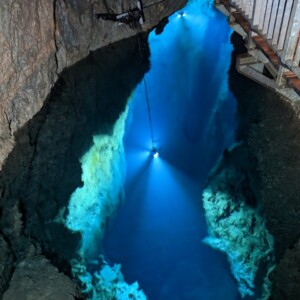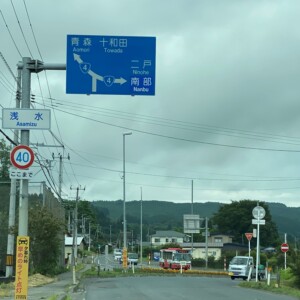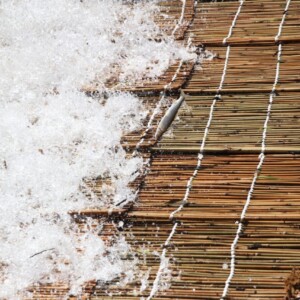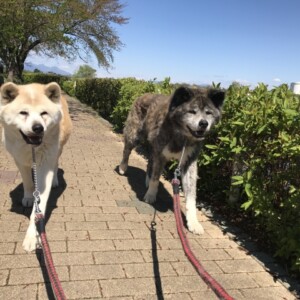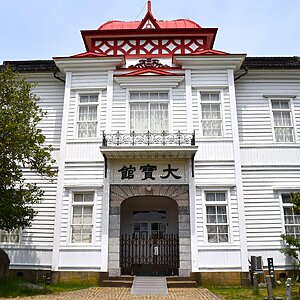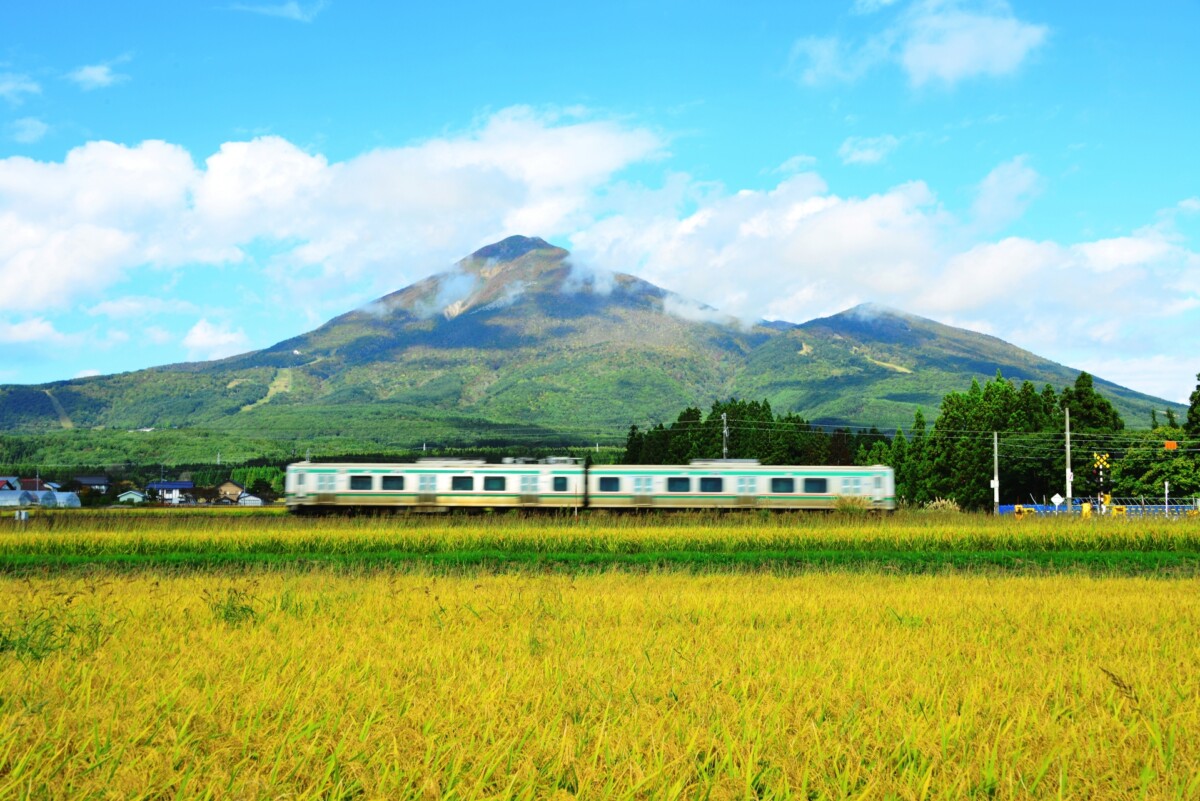
Introducing a difficult train that even staff members of Inawashiro express trains with three destinations [Fukushima Prefecture]
table of contents
On today's railways, the destinations of medium- to long-distance trains are usually simple
It is not impossible to be taken to an unexpected place as a result of boarding a train, but it is rare. Also, on trains where passengers may be taken to an unintended station, such as the Shinkansen trains " Hayabusa " and " Komachi " or " Yamabiko " and " Tsubasa " that operate in conjunction with two other trains, sufficient notice is generally given to passengers at the station and on board.
However, until about 40 years ago, there was a train that was named one but had three destinations , making it difficult to understand not only for the passengers but also for the staff guiding them.
Inawashiro that I will introduce this time .
The birth of the express train "Inawashiro"
The predecessor of the express "Inawashiro" Aizu " which was introduced in 1959.
The route ran from Sendai Station, heading south on the Tohoku Main Line, passing through Fukushima Station and Koriyama Station, then onto the Ban'etsu West Line, passing through Aizu-Wakamatsu Station, and on to Kitakata Station
Since 1965, in addition to "① Trains connecting Sendai Station and Kitakata Station," "② Trains connecting Sendai Station and Aizu-Kawaguchi Station or Tadami Station (both currently on the JR Tadami Line)" and "③ Trains connecting Sendai Station and Aizu-Tajima Station (currently a station on the Aizu Railway Aizu Line)" have also been added, and the three trains now run coupled together between Sendai Station and Aizu-Wakamatsu Station .
For more information about the Tadami Line, please see this article
In 1966, the "Aizu" was upgraded from a semi-express train to an express train, and in 1968 it was renamed "Inawashiro." The name is thought to come from the name of a place along the Ban'etsu West Line, known for Lake Inawashiro and other attractions
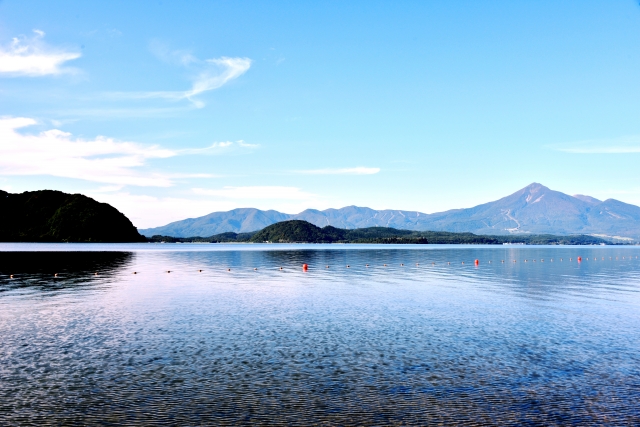
Depending on the time of year, there were trains where the carriages running between Sendai Station and Kitakata Station were not coupled, and instead the express "Agano" running between Sendai Station and Niigata Station was coupled to the "Inawashiro"
It was a train with a really complicated operation
Express "Inawashiro" operation format
Now, based on the timetable from the timetable revision in October 1978, we will once again introduce the operation of the Inawashiro and related trains
First, let's take the example of "Inawashiro No. 4," which departs from Sendai Station at 4:15 p.m
To give you a diagram, the route of the express "Inawashiro" and the express "Iwaki" that is coupled to it is as follows
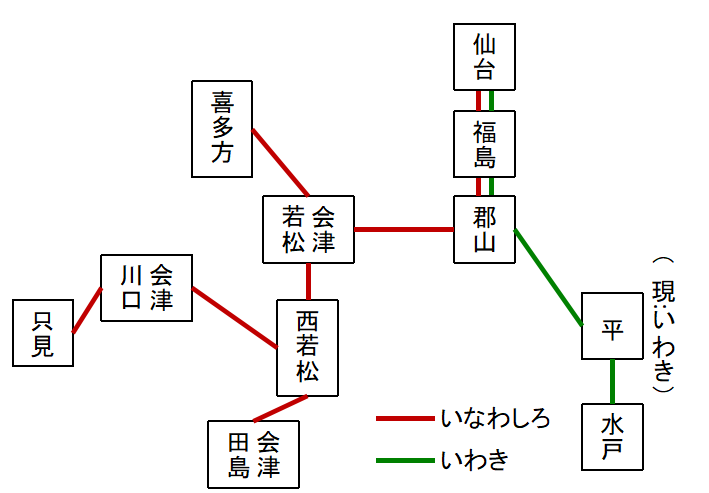
When Inawashiro No. 4 , it is coupled with cars bound for Kitakata, Tadami, and Aizu-Tajima
(green cars are only attached to cars bound for Kitakata).
If you want to go to a station further than Aizuwakamatsu Station, you need to get on the correct car or you will be taken to the wrong station
And the story doesn't end here
The Inawashiro 4 is also coupled with the Iwaki 6, an express train with a completely different destination. The Iwaki 6 runs from Sendai Station via Koriyama Station, enters the Ban'etsu East Line, passes through Taira (now Iwaki) Station, and heads south on the Joban Line to Mito Station in Ibaraki Prefecture
Therefore , when it departs from Sendai Station, the "Inawashiro No. 4 + Iwaki No. 6" train has four destinations in one: Kitakata, Tadami, Aizu-Tajima, and Mito .
The Inawashiro 4 and Iwaki 6 travel south on the Tohoku Main Line from Sendai Station to Fukushima Station as local trains rather than express trains (they pass through some stations, so would be considered rapid trains in the modern sense), and when they arrive at Fukushima Station at 5:50 p.m., green cars and other cars are added to the Iwaki 6
Continuing south, Iwaki No. 6 arrives at Koriyama Station at 18:42, where it separates from Inawashiro No. 4 and enters the Ban'etsu East Line, heading for Mito Station (arriving at Mito Station at 22:52)
Inawashiro No. 4 departs Koriyama Station at 7:15 p.m., travels west on the Ban'etsu West Line, and arrives at Aizuwakamatsu Station at 8:33 p.m
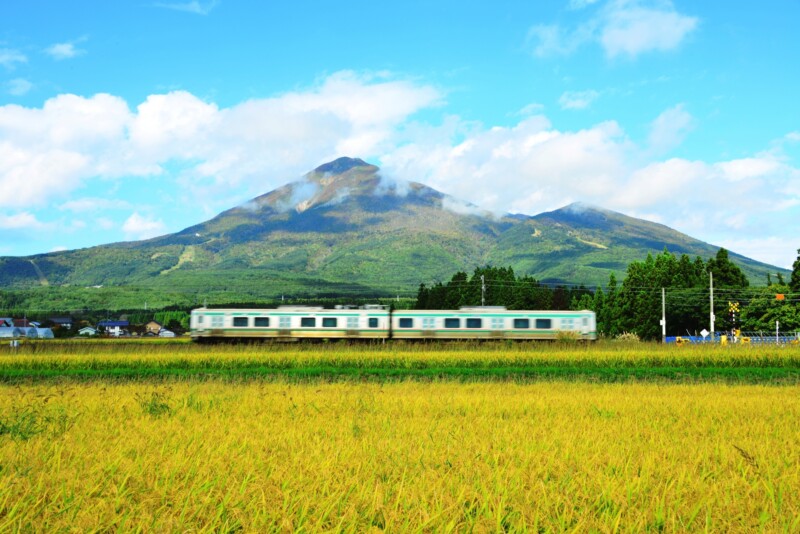
Here, the Inawashiro 4 train is split into three, with the Kitakata-bound train departing first at 20:39 and arriving at its final destination, Kitakata Station, at 20:54
Next, at 9:08 p.m., a train bound for Tadami departs Aizuwakamatsu Station and arrives at Tadami Station at 11:23 p.m
The train bound for Aizu-Tajima departs Aizu-Wakamatsu Station at 9:16 p.m. and arrives at Aizu-Tajima Station at 10:20 p.m
The Inawashiro 1 bound for Sendai generally follows the reverse procedure
The train that departs Tadami Station at 5:13 and the train that departs Aizu-Tajima Station at 6:20 will couple at Nishi-Wakamatsu Station, depart at 7:28, and arrive at Aizu-Wakamatsu Station at 7:35
The train that departed Kitakata Station at 7:25 also arrived at Aizu-Wakamatsu Station at 7:35, connecting with trains departing from Tadami Station and Aizu-Tajima Station
The train departs Aizuwakamatsu Station at 7:45, heading east on the Ban'etsu West Line, and arrives at Koriyama Station at 9:04
The Iwaki 1 train coming from Mito arrives at Koriyama Station at 9:08 and couples with the Inawashiro 1 train, and together they head towards Fukushima and Sendai
Upon arriving at Fukushima Station at 10:04, some of the cars, including the green cars, of the Iwaki 1 are detached and the train continues north as a local train, arriving at Sendai Station at 11:54
So far, we have used "Inawashiro No. 4 and No. 1" as an example, but "Inawashiro No. 2 and No. 3" operate in a different manner
The Inawashiro No. 2 was made up entirely of carriages bound for Aizu-Kawaguchi from Fukushima, and from Fukushima Station to Aizu-Wakamatsu Station it operated in conjunction with the Agano No. 4, which departed from Sendai and headed for Niigata
The same applies to the "Inawashiro 3" train, which departs from Aizu-Kawaguchi and heads to Fukushima; from Aizu-Wakamatsu Station to Fukushima Station, it is coupled with the "Agano 1" train, which departs from Niigata and heads to Sendai
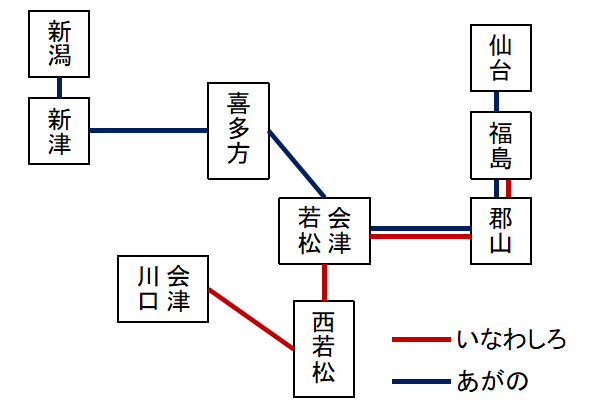
This diagram is current as of October 1978, and at times the three train types "Inawashiro," "Agano," and "Iwaki" operated together north of Koriyama Station (on the Tohoku Main Line) .
The Inawashiro was a train with multiple destinations on one train, and it was also coupled with the Iwaki and Agano trains, and some of the cars were being coupled and uncoupled at Fukushima Station, making it extremely difficult to provide information to passengers .
Passengers were also said to have been anxious about whether the train they were riding in would actually reach their destination
During the Japan National Railways era, there were other trains with complex routes and many other connections
Please also read this article
Vehicles used for the express "Inawashiro"
The express "Inawashiro" trains departing and arriving at Kitakata Station were diesel railcars, such as the Kiha 58 and Kiha 55, used for express and semi-express trains of the Japanese National Railways (the predecessor of JR), and included green cars
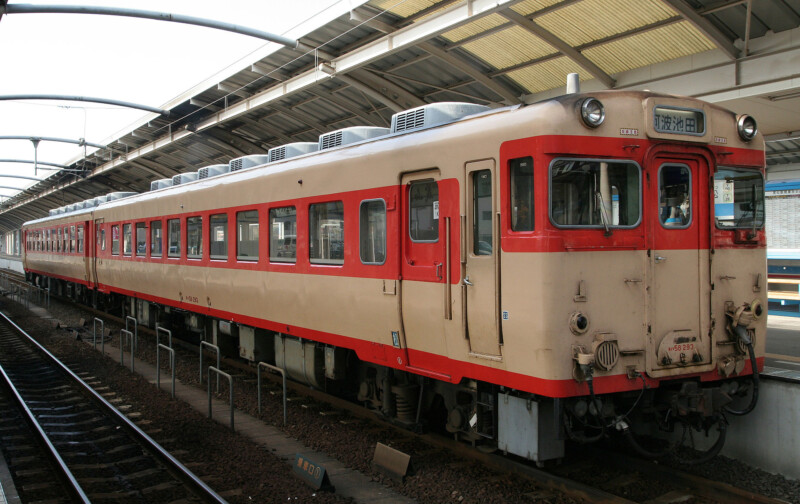
Author : Mitsuki-2368 – Own work, CC BY 3.0, https://commons.wikimedia.org/w/index.php?curid=3365513
On the other hand, trains departing from and arriving at Aizu-Tajima Station, and trains departing from and arriving at Tadami Station or Aizu-Kawaguchi Station only have one car attached, and since express diesel railcars are not suitable for operation with just one car, they use diesel railcars called Kiha 52, which are also used for local trains
Express trains running with only one car are rare nationwide, and are prized by railway enthusiasts. However, because the express fare is required to board the train, even though the car is also used for local trains, they are sometimes called "inferior express trains."
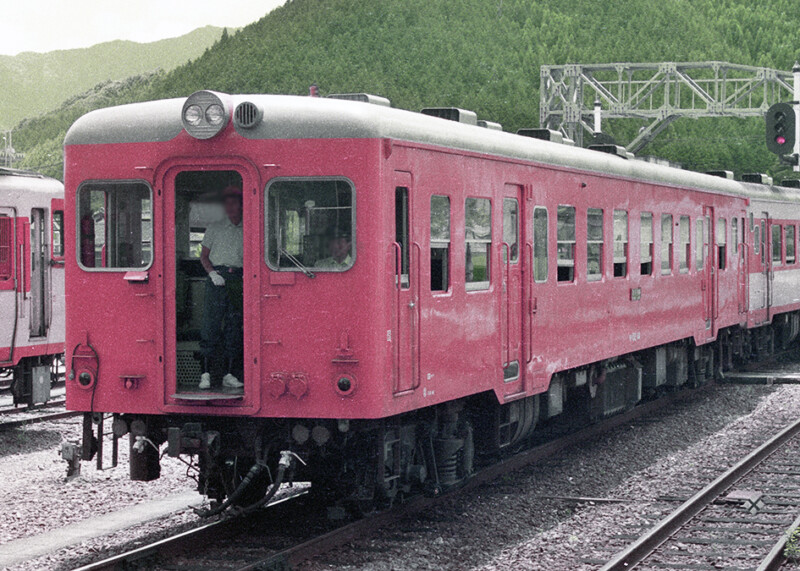
Author: spaceaero2 – Own work. Kubokawa Station, CC BY 3.0, https://commons.wikimedia.org/w/index.php?curid=12836220 .
All of the vehicles used on the express "Inawashiro" were diesel railcars that ran on diesel fuel
On the other hand, electrification (the installation of facilities to supply electricity to rolling stock) was completed on the Ban'etsu West Line between Koriyama Station and Kitakata Station in 1967. Therefore, rolling stock departing from and arriving at Kitakata was running on diesel, even though the entire operating section between Sendai Station and Kitakata Station was electrified, which was a bit of a waste
The abolition of "Inawashiro" and its aftermath
During the time when the express "Inawashiro" was in operation, it was difficult to even clear snow from roads in winter, so it is said to have been a very useful train at the time
However, with the opening of the Tohoku Shinkansen in 1982, express trains in the Tohoku region were reorganized, and the Inawashiro express was discontinued in the timetable revision in November 1982
A successor express train was set up between Sendai Station and Kitakata Station, but this too was soon discontinued, and by the timetable revision in March 1985, there were no more direct trains running from Sendai Station or Fukushima Station to the Ban'etsu West Line, and there is currently no train that can be called a direct successor to the express "Inawashiro."
As of 2024, in the Aizu region, trains such as the rapid "Aizu" that connects Koriyama Station and Aizu-Wakamatsu Station, the tourist train "Aizu SATONO" that connects Koriyama Station and Kitakata Station, and the rapid "Aizu Mount Express" that connects Tobu Railway's Kinugawa Onsen Station in Nikko City, Tochigi Prefecture with Aizu-Wakamatsu Station and Kitakata Station via the Aizu Railway Aizu Line serve to connect Aizu with other regions


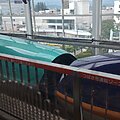


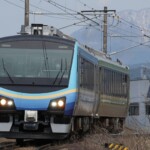
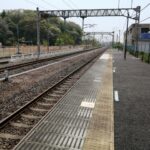

![[Fukushima Prefecture] Let's stay at a roadside station! Introducing roadside stations with accommodation facilities in Fukushima Prefecture! IMG_5542](https://jp.neft.asia/wp-content/uploads/2024/09/IMG_5542-150x150.jpg)

![[Craft beer in the Aizu and southern prefecture area of Fukushima Prefecture] 4 choices, from long-established establishments to newly-evolved breweries! craft beer](https://jp.neft.asia/wp-content/uploads/2022/06/2575876_m-150x150.jpg)
![A report on the experience of "Whiskey Collection Koriyama," Tohoku's first whiskey event! [Fukushima Prefecture] Whiskey Collection Koriyama](https://jp.neft.asia/wp-content/uploads/2024/10/IMG_0751-EDIT-150x150.jpg)
![The delicacy "Anko" is a delicious winter taste on the beach! [Fukushima Prefecture] Monkfish](https://jp.neft.asia/wp-content/uploads/2022/02/2054097_m-150x150.jpg)
![A tour of the 33 remaining Kannon in Minami Aizu. "Thirty-three Kannon" certified as a Japanese Heritage Site [Fukushima Prefecture] 11_MG_9631](https://jp.neft.asia/wp-content/uploads/2022/11/11_MG_9631-150x150.jpg)

